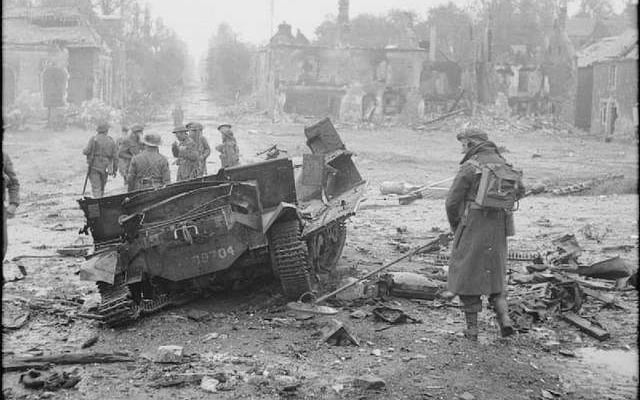"Battle of Kursk (1943): The Epic Tank Clash That Crushed Nazi Germany’s Eastern Front | In-Depth Analysis"
"Explore the Battle of Kursk, WWII’s largest tank battle. Discover how Soviet strategy, German blunders, and brutal warfare turned the Eastern Front’s tide. SEO-optimized, plagiarism-free breakdown."


Introduction
The Battle of Kursk (July 5–August 23, 1943) remains a defining moment in World War II history. Dubbed the "largest tank battle ever fought," this brutal confrontation between Nazi Germany and the Soviet Union marked the end of Hitler’s offensive ambitions on the Eastern Front. In this detailed guide, we unravel the strategies, heroics, and colossal mistakes that shaped Kursk, while highlighting its enduring legacy.
Why the Battle of Kursk Matters
Turning Point of WWII: After Kursk, Germany never launched another major offensive in the East.
Scale: 6,000+ tanks, 4,000+ aircraft, and 3 million soldiers clashed.
Innovation in Warfare: Pioneering use of defensive tactics, minefields, and tank technology.
Table of Contents
Background: The Road to Kursk
Opposing Forces: Wehrmacht vs. Red Army
Operation Citadel: Hitler’s Gamble
The Battle Unfolds: Northern and Southern Fronts
Prokhorovka: The Tank Bloodbath
Soviet Counteroffensives: Kutuzov and Rumyantsev
Casualties and Costs
Why Germany Lost: Critical Errors
Kursk’s Impact on WWII
Myths and Misconceptions
Frequently Asked Questions
1. Background: The Road to Kursk
After the Soviet victory at Stalingrad (1943), Germany sought to regain momentum. The Kursk salient—a Soviet-held bulge jutting into German lines—became Hitler’s target. Codenamed Operation Citadel, the plan aimed to encircle Soviet forces, but delays allowed the USSR to fortify the region with 3,000 miles of trenches, 500,000 mines, and layered defenses.
Key Events Leading to Kursk:
Spring 1943: German retreat from Stalingrad.
Manstein’s Backhand Blow: Temporary stabilization of the Eastern Front.
Soviet Intelligence: Spies like the Lucy Network leaked Citadel’s details, enabling Stalin to prepare.
2. Opposing Forces: Wehrmacht vs. Red Army
German Army (Wehrmacht)
Commanders: Erich von Manstein, Günther von Kluge, Walter Model.
Strength: 900,000 troops, 2,700 tanks (including Tiger I and Panther tanks), 10,000 artillery.
Strategy: Blitzkrieg-style pincer attack to crush the Kursk salient.
Soviet Red Army
Commanders: Georgy Zhukov, Konstantin Rokossovsky, Nikolai Vatutin.
Strength: 1.9 million troops, 5,000+ tanks (T-34s), 25,000 artillery, and air support.
Strategy: Defense-in-depth to wear down Germans, followed by counterattacks.
3. Operation Citadel: Hitler’s Gamble
Delayed until July to deploy new tanks, Hitler’s hesitation proved fatal. The Soviets, forewarned, turned Kursk into a fortress.
German Objectives:
Northern Front (Model): Break through Rokossovsky’s Central Front.
Southern Front (Manstein): Smash Vatutin’s Voronezh Front.
4. The Battle Unfolds: Northern and Southern Fronts
Northern Front (July 5–12)
Model’s Ninth Army faced Rokossovsky’s intricate defenses. Despite initial gains, German forces stalled at Olkhovatka under relentless artillery and air strikes.
Southern Front (July 5–16)
Manstein’s Fourth Panzer Army, spearheaded by the II SS Panzer Corps, pushed toward Prokhorovka. The Soviets sacrificed tanks to slow the advance, culminating in the climactic tank duel at Prokhorovka.
5. Prokhorovka: The Tank Bloodbath (July 12)
Location: Prokhorovka, southern Kursk.
Forces: 600+ German vs. 800+ Soviet tanks.
Outcome: A tactical draw but strategic Soviet victory. German losses crippled their offensive capacity.
Myth Busting: Contrary to legend, Prokhorovka wasn’t the largest tank battle—earlier clashes at Kursk involved more armor.
6. Soviet Counteroffensives: Kutuzov and Rumyantsev
With German momentum broken, the USSR launched:
Operation Kutuzov (July 12): Liberated Orel, threatening Model’s rear.
Operation Rumyantsev (August 3): Recaptured Belgorod and Kharkiv.
7. Casualties and Costs
Germany: 200,000+ casualties, 760 tanks destroyed.
USSR: 800,000+ casualties, 6,000 tanks lost.
Civilian Impact: Widespread destruction, but Soviet industrial capacity outproduced Germany.
8. Why Germany Lost: Critical Errors
Delays: Allowed Soviets to fortify.
Underestimating Soviet Resilience: USSR replaced losses faster.
Allied Invasion of Sicily (July 9): Diverted German resources.
9. Kursk’s Impact on WWII
Eastern Front: USSR seized initiative, leading to the march on Berlin.
Global Perception: Demonstrated Soviet military prowess, influencing post-war geopolitics.
10. Myths and Misconceptions
Myth: Kursk was solely a tank battle.
Truth: Combined arms—infantry, artillery, airpower—were decisive.Myth: The USSR won through sheer numbers.
Truth: Superior strategy and intelligence played key roles.
11. FAQs About the Battle of Kursk
Q: What tanks were used at Kursk?
A: Germany deployed Tigers and Panthers; Soviets relied on T-34s and SU-152s.
Q: How long did the battle last?
A: Officially July 5–August 23, 1943.
Q: Was Kursk the war’s turning point?
A: Yes—it ended German offensives in the East.
Conclusion
The Battle of Kursk was a brutal testament to Soviet resilience and German overreach. Its lessons in strategy, technology, and the cost of war resonate today. For history enthusiasts, Kursk remains a pivotal study in how preparation, intelligence, and adaptability shape destiny.
